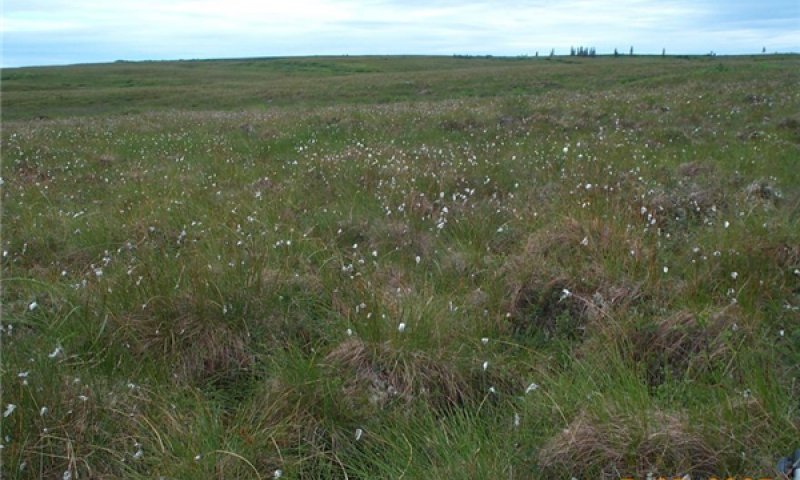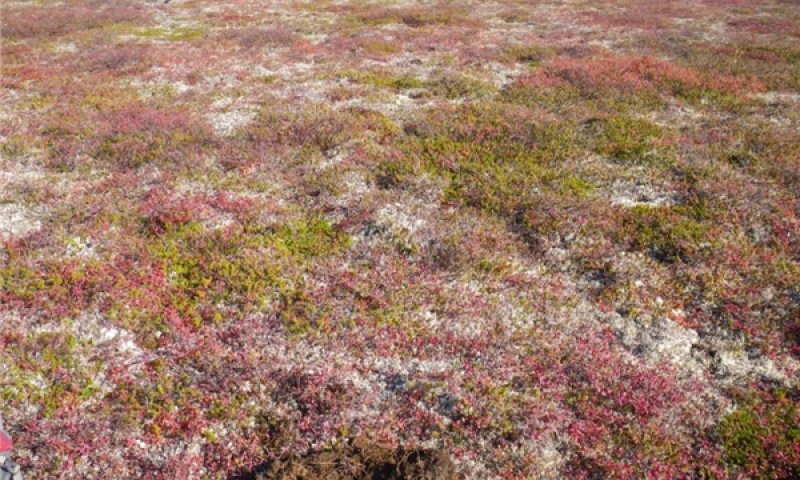

Natural Resources
Conservation Service
Ecological site R236XY131AK
Subarctic Tussock-Scrub Frozen Plains
Last updated: 2/13/2024
Accessed: 12/21/2025
General information
Provisional. A provisional ecological site description has undergone quality control and quality assurance review. It contains a working state and transition model and enough information to identify the ecological site.
MLRA notes
Major Land Resource Area (MLRA): 236X–Bristol Bay-Northern Alaska Peninsula Lowlands
The Bristol Bay-Northern Alaska Peninsula Lowland Major Land Resource Area (MLRA 236) is located in Western Alaska. This MLRA covers approximately 19,500 square miles and is defined by an expanse of nearly level to rolling lowlands, uplands and low to moderate hills bordered by long, mountain footslopes. Major rivers include the Egegik, Mulchatna, Naknek, Nushagak, and Wood River. MLRA 236 is in the zone of discontinuous permafrost. It is primarily in areas with finer textured soils on terraces, rolling uplands and footslopes. This MLRA was glaciated during the early to middle Pleistocene. Moraine and glaciofluvial deposits cover around sixty percent of the MLRA. Alluvium and coastal deposits make up a large portion of the remaining area (Kautz et al., 2012; USDA, 2006).
Climate patterns across this MLRA shift as one moves away from the coast. A maritime climate is prominent along the coast, while continental weather, commonly associated with Interior Alaska, is more influential inland. Across the MLRA, summers are general short and warm while winters are long and cold. Mean annual precipitation is 13 to 50 inches, with increased precipitation at higher elevations and areas away from the coast. Mean annual temperatures is between 30 and 36 degrees F (USDA, 2006).
The Bristol Bay-Northern Alaska Peninsula MLRA is principally undeveloped wilderness. Federally managed land includes parts of the Katmai and Aniakchak National Parks, and the Alaska Peninsula, Becharof, Togiak and Alaska Maritime National Wildlife Refuges. The MLRA is sparsely populated. Principal communities include Dillingham, Naknek, and King Salmon. Commercial fishing in Bristol Bay and the Bering Sea comprises a major part of economic activity in the MLRA. Other land uses include subsistence activities (fishing, hunting, and gathering) and sport hunting and fishing (USDA, 2006).
Classification relationships
Alaska Vegetation Classification:
Mesic graminoid herbaceous (III.A.2 - level III) / Tussock tundra (III.A.2.d - level IV)
(Viereck et al., 1992)
LandFire BioPhysical Settings Model
Alaska Arctic Scrub Birch-Ericaceous Shrubland – Infrequent Fire- 7616821 (LandFire BpS, 2009)
Ecological site concept
This ecological site is on concave plain slopes with cold, organic, permafrost-supporting soils. Site elevation is between 10 and 960 feet above sea level. Slopes are nearly level to strongly sloped (1 – 12 percent). Soil hydrology, soil temperature, and frost heave shape the vegetation on this landform. Water perches atop the permafrost during the growing season, restricting vegetation. Frost heave creates peat mounds that do not pond throughout the growing season, allowing a different community to develop.
The reference state supports two communities. The reference plant community is a tussock tundra (Viereck et al., 1992). It is composed of a tussock cottongrasses, ericaceous shrubs, and thick moss. Ponding in the concave depressions support primarily facultative to obligate wetland species in the reference plant community, while shrubs dominate community 1.2, which is restricted to raised areas on top of frost-heaved peat mounds.
Associated sites
| R236XY109AK |
Subarctic Low Scrub Peat Drainages Both sites are in concave plain slopes. R236XY109AK is not associated with permafrost and does not support the peat mounds that define R236XY131AK. This site contains more tussock graminoids and less shrubs that R236XY109AK. |
|---|---|
| R236XY130AK |
Subarctic Scrub Scrub Tundra Loamy Plains and Hills Both sites are on plain landforms. R236XY130AK is an ericaceous scrubland site on linear plain slopes. R236XY131AK is a tussock tundra associated with permafrost and the microtopography created by frost heave and collapse. |
| R236XY132AK |
Subarctic Dwarf Scrub Dry Loamy Slopes Both sites are on plain landforms. R236XY132AK is an ericaceous scrubland site on convex plain slopes. R236XY131AK is a tussock tundra, differentiated by the presence of permafrost and the microtopography created by frost heave and collapse. |
| R236XY140AK |
Subarctic Tussock Tundra Wet Loamy Plains Both sites support tussock graminoids. R236XY140AK describes the tussock scrublands on non-permafrost eolian plain talfs. R236XY131AK describes mounded features with permafrost on these talfs and is identifiable by the microtopography created by frost mound heave and collapse. |
Similar sites
| R236XY130AK |
Subarctic Scrub Scrub Tundra Loamy Plains and Hills Both sites support a mix of facultative to obligate wetland shrubs and graminoids. These sites are dominated by ericaceous shrubs on acidic soils. R236XY131AK is distinguished by the frost heave mound topography created by permafrost, which is not found in R236Xy130AK. |
|---|---|
| R236XY140AK |
Subarctic Tussock Tundra Wet Loamy Plains Both sites support tussock cottongrasses. R236XY131AK is underlain with permafrost and experiences frost heave and collapse. R236XY140AK supports multiple communities based on a ponding regime not recorded in this site. |
Table 1. Dominant plant species
| Tree |
Not specified |
|---|---|
| Shrub |
(1) Ledum palustre subsp. decumbens |
| Herbaceous |
(1) Eriophorum vaginatum |
Click on box and path labels to scroll to the respective text.
Ecosystem states
State 1 submodel, plant communities
| 1.1a | - | Frost heave. |
|---|---|---|
| 1.2a | - | Frost heave collapse. |



